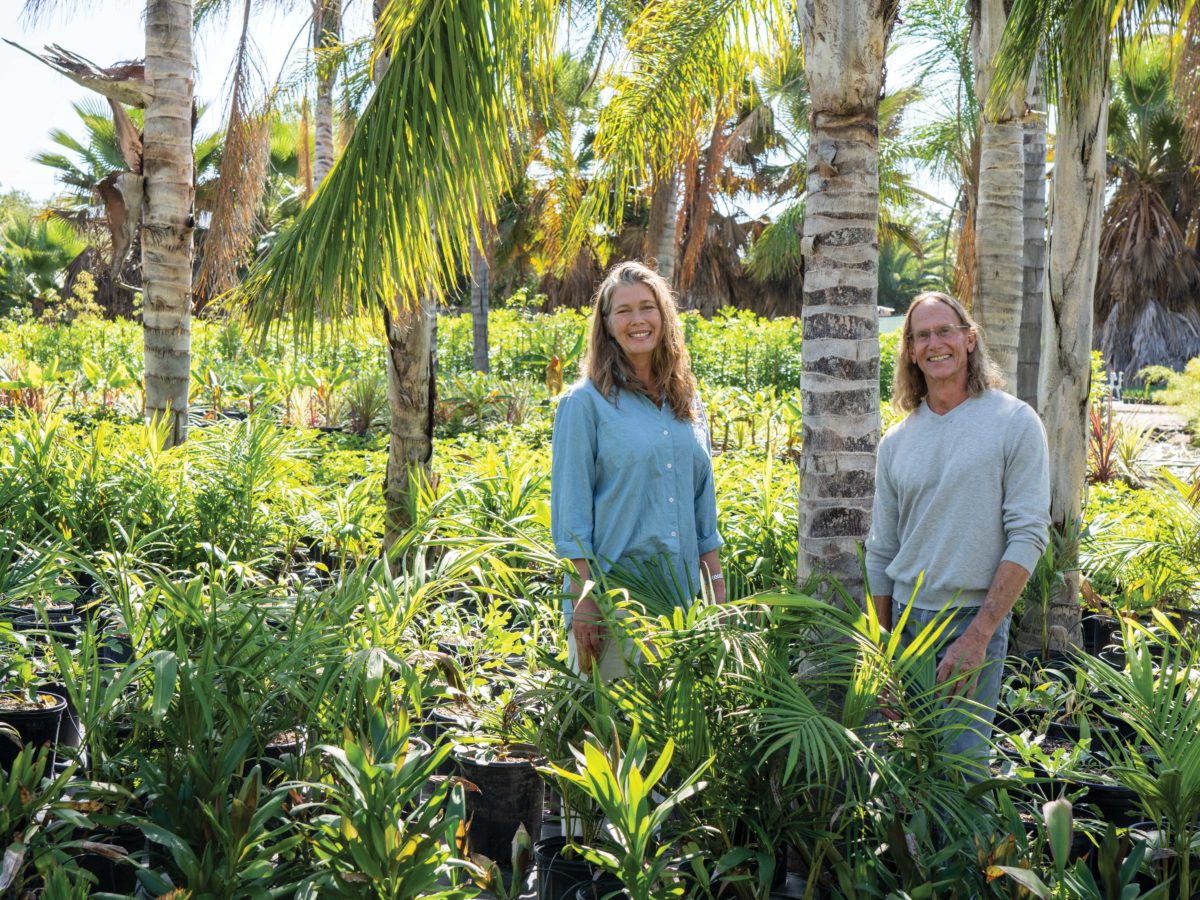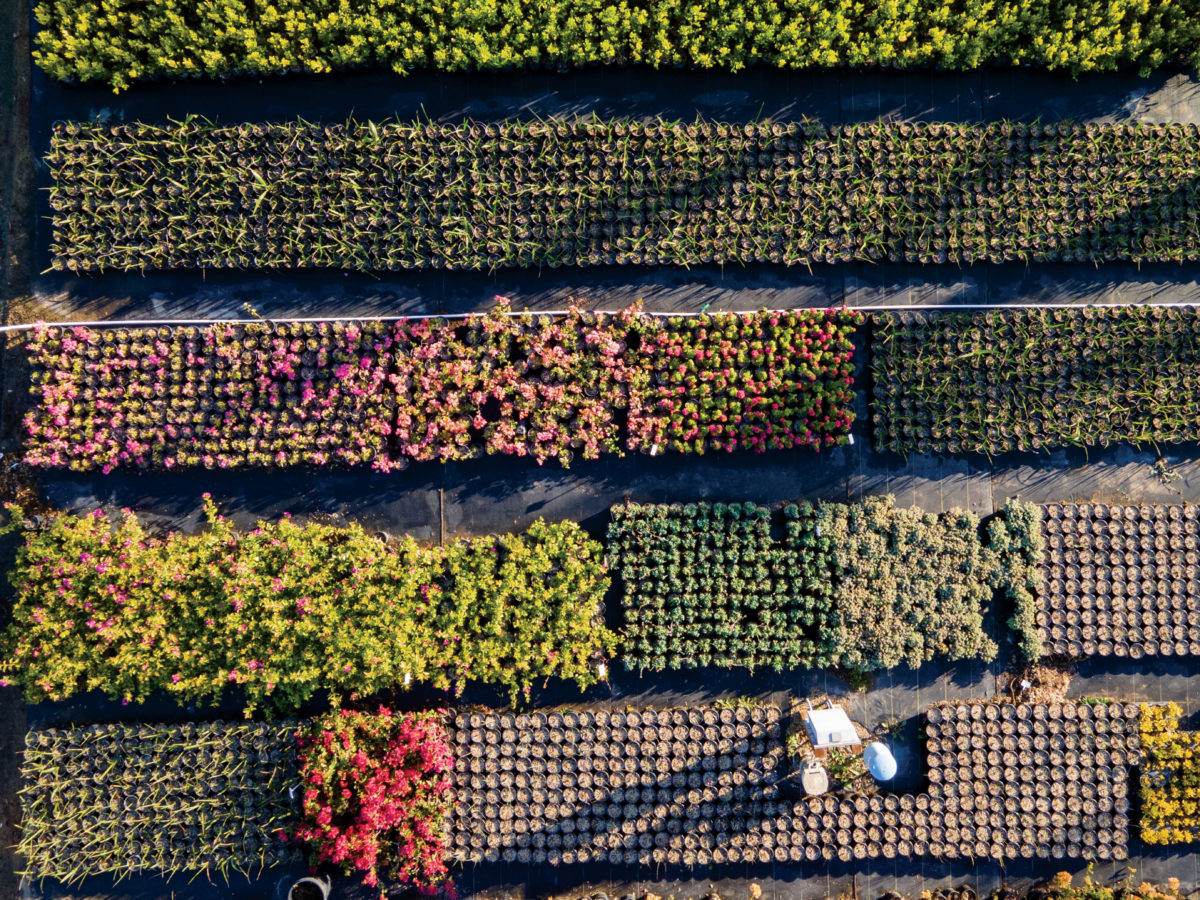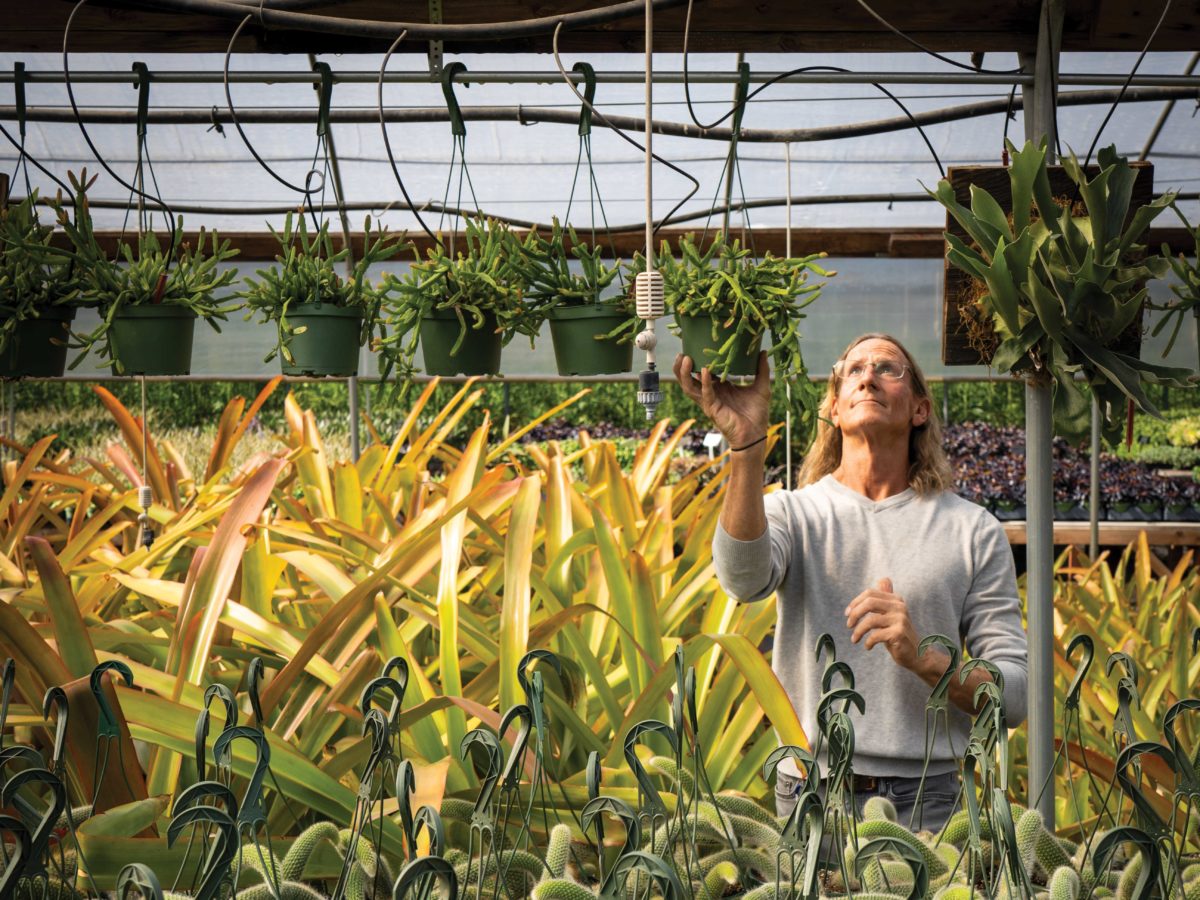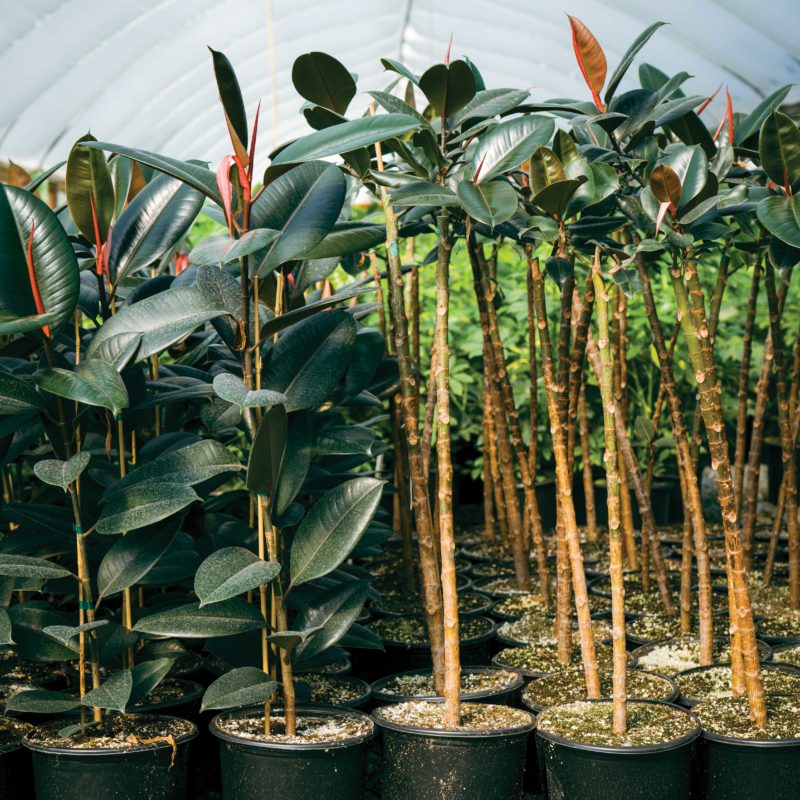
You Know and Love This San Francisco Plant Store. But Have You Seen the Nursery?
Join us on an exclusive tour of plant icon Flora Grubb’s 32-acre nursery near San Diego.

Flora Grubb, the face of iconic San Francisco plant store Flora Grubb Gardens, which she co-owns with her partner, Saul Nadler, has a secret. Yes, it says right on their website that they own a nursery, about 50 miles outside San Diego. But this is the first time that Grubb & Nadler Nurseries has ever been shot by a magazine, newspaper, or website.
We intend to roll out the green carpet, too, because Grubb deserves the accolades. An accomplished landscape designer, she’s spent the last 19 years finding the low-water, sculptural plants that make for head-turning gardens. (She started gardening as a child, then quit high school “to do a little landscaping” and pull weeds between babysitting gigs.) Today, her garden store is so well-loved that visitors are prone to write gushing, five-star reviews on Yelp like “I wish I lived here” and “This place gave me life!!!!”

Thomas J. Story
Speaking of life, Grubb & Nadler Nurseries is brimming with it. Spanning 32 acres, the visuals are a jolt to the system: Row upon row of Euphorbia tirucalli ‘Sticks on Fire’ gleam in the afternoon sun against a backdrop of Mexican fan palms, while plants like Philodendron ‘Birkin’ and Ficus ‘Audrey’ glint in the greenhouses in shades that run the gamut from beer-bottle green to citron.

Thomas J. Story
The nursery has long focused on growing outdoor plants, but, perhaps not surprisingly, in 2019 Grubb expanded into houseplants, too. “Customers find real satisfaction in knowing how to nurture another living thing,” Grubb says. Meanwhile, young people have been coming to her store in droves since the start of the pandemic. (“I have this joke,” she says. “Things 19-year-olds say: ‘I have 20 houseplants in my bedroom,’ ‘I have 30 houseplants in my bedroom.’”)

Thomas J. Story
You may be surprised to learn that Grubb didn’t know how houseplants were propagated until she started doing so herself. “It was one of those things that’s always been right in front of my eyes that I hadn’t ever thought about,” she says. And when she did find out? Her eyes take on an excited cast as she says, “My mind was blown.“
Plant Propagation 101

Thomas J. Story
Here’s a thought experiment: Say you go to your local plant store—or get a delivery from one of the many online plant companies famous for their unboxing videos. Do you understand the magic that needed to happen before your new plant baby hit the pot? Was it propagated by seed? you wonder. No, not by seed. By sticking a cutting in water? Nope, not that way either. Here’s the inside scoop on plant propagation from Flora Grubb and her nursery’s head grower, Gregg Opgenorth.
Cane Method
When using the cane method, producers in climate-appropriate places like Central America take a cutting from the mother plant, which then arrives in the United States looking, as Grubb puts it, “like a dead stick.” Opgenorth puts the cuttings in the greenhouse and gives them exactly the right care until they are large enough to be sold. “I have half a million little children,” he says with a laugh.
Cool Factor: The result looks like a little tree.
Cutting Method
For the cutting method, 2- to-8-inch cuttings are taken from the mother plant and arrive looking like a plant stub (as in, no roots). Opgenorth pots these in the correct growing medium and, once again, cares for the plants until they’re ready to sell.
Cool Factor: You retain what you love about the plant parent. It turns out that, just like with kids, plants grown from seed can have different characteristics from the parents. And many of us know how challenging that can be.
Micro-Propagation
Plants that are micro-propagated—or cloned—begin their lives in labs with Terminator-sounding names like Rancho Tissue Technology and Micro Paradox. The lab peels the leaves off the mother plant until they get to the meristem, which is where new leaves are formed, then puts that in a petri dish and adds growth hormones until they get multiple tiny plants, which are later potted. (Wait, multiple tiny plants? Aw, cute!)
Cool Factor: Micro-propagation is fast. Says Opgenorth: “Otherwise it could take years to grow enough of the moth orchids we see for sale at Trader Joe’s.”
